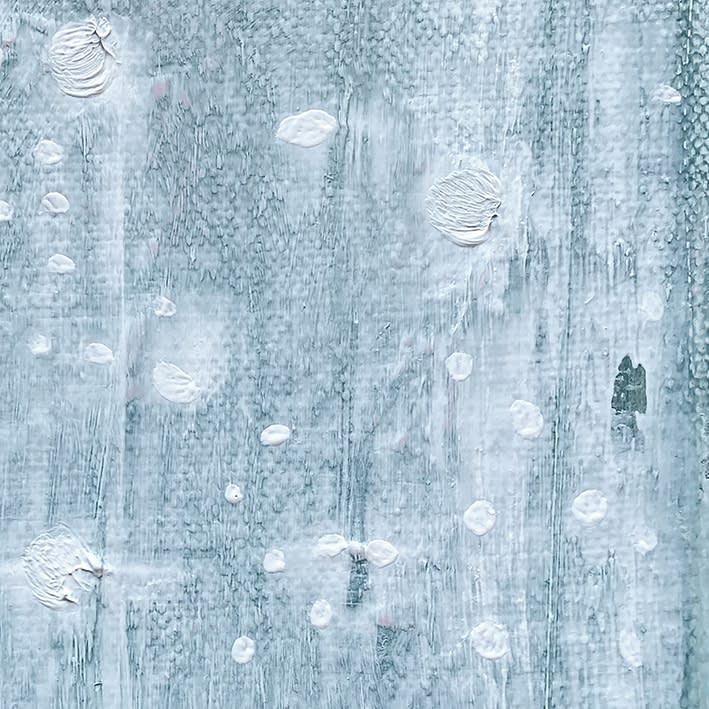Gravity, an invisible force, is often an unspoken element in my work.
When I throw paint or let it drip across a canvas, I’m allowing it to act on my marks, inviting the unpredictable. Its downward pull reshapes intention, creating patterns I couldn’t plan, and pushing the work beyond my control. The strength of a mark is tested in this process - whether it can endure or is dissolved, leaving behind only faint echoes. For me, these remnants are just as vital as the original gestures, shadowing the idea that what disappears still informs what remains.
This interplay mirrors the passage of time.
For humans, time is finite, linear, and pressing - its weight often felt in what we lose.
But nature holds a different relationship to human time, one marked by cycles and immense scale. Glaciers, with their slow, deliberate descent, carry the memory of ages within their layers of ice, untouched by the urgency we feel as living human beings. Their crawling pace defies our comprehension, reminding us of forces so ancient and vast that they seem almost eternal.
Yet even glaciers succumb to gravity, carving valleys as they move, leaving traces of their journey long after they have melted into the earth.
In my process, the layers of paint pulled by gravity act like those glacial carvings - some remain, solid and resilient, while others fade into shadows, much like memory itself.
Nature, through her slow rhythms, teaches us that even as time moves, it leaves beauty in its wake, in the traces and marks that endure.
As I step back from my canvas and consider the marks left by gravity, I’m reminded that creation, like life, is not always about holding on - it’s about letting go and seeing what remains. Perhaps this week, you might notice the forces at work in your own life, the quiet rhythms shaping your days
